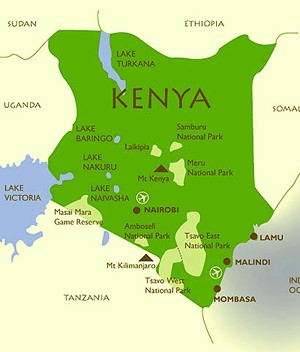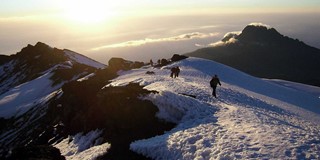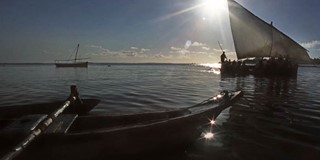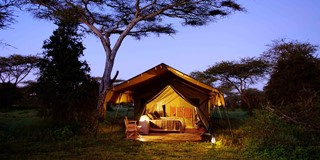
Samburu National Park
Speak to our tour consultants for a more custom made itinerary to suit your travel needs.
Tel: +254 706 124 625

- Background Information
- Game Viewing & Activities
- The Samburu People
Samburu National Reserve is a semi arid area situated to the north of Mount Kenya and the equator. The complex formed by Samburu, Buffalo Springs and Shaba Reserves is one of the most stimulating and challenging of wildlife areas in Kenya. They are the most accessible and visited of the protected areas in the country's rough north, right at the edge of the evocative NFD or Northern Frontier District - a vast and little visited region where travelling is rough and the nomadic tribes have changed little over the centuries.
The countryside in Samburu is characterized by thorn scrub interspersed with wide lava strewn plains. Acacia and Dom Palms shade the broken ridges and sand rivers. The Uaso Nyiro River, which has its origins in the moorlands of the Aberdares Mountains to the south, is the main feature of this habitat and it supports a large variety of wildlife and Game birds. Even in times of drought its 32 km (20 miles) of permanent water provides succour to the local game. When the water levels are very low the elephants dig into dry sand in order to create small water holes.
When the river is higher they are a common sight bathing all along the river, their young playing and the squeals rumbles and trumpets thrilling their human observers. The Uaso Nyiro waters countless humans and animals in Samburu District, before its sleepy brown waters head north-east, where several hundred kilometres later the life-giving river sinks into the Lorian Swamp.
Buffalo Springs, in the Reserve of same name bordering the eastern side of Samburu reserve, is formed by underground streams coming from Mount Kenya. These springs give rise to freshwater pools and streams - attracting thousands of Sandgrouse and Doves as well as many other birds and animals. One of the springs has been walled in to keep out crocodiles and braver visitors in need of cooling down from the hot sun swim here.
The dusty plains are broken by the Koitogorr (“uplift” in the language of the Samburu tribe) and, lying far beyond, the flat head of the reddish Ol Olokwe Mountain, as well as many other ranges of hills and mountains further north. Turning back you can also see the peaks of Mt Kenya to the south, dwarfed by distance. The dry, dusty heat, the extraordinary shapes of the pale blue, mauve and indigo hills, the local people and the life-giving river and springs, with their rich variety of animals and birds, all combine to make Samburu a treasured experience.
Grevy’s Zebra, Somali Ostrich, Kudu, Beisa Oryx, Reticulated Giraffe and Gerenuk are among the northern species that can be seen in Samburu. Leopards, lion, Cheetah, Crocodiles, Buffalo, tiny Dik-dik and Spotted and Striped Hyena are frequently sighted. Immense flocks of Helmeted and Vulturine Guinea-fowl drink at the river, while it’s not uncommon to see 100 species of birds in a day, including the giant Martial Eagle and tiny Pygmy Falcon.
The most northerly representatives of Kenya’s tribes who speak the Maa language, the Samburu, occupy an approximate area of 18,000 sq km (11,160 sq miles) demarcated roughly by Samburu District, along with some of the bordering Marsabit District. The Samburu, still adhering to their traditional way of life as nomadic pastoralists, often refer to themselves as Loikop - “those who have territory”, a fierce and proud statement of their success in defending themselves against the equally proud and fierce tribes to the north.
::: Select Recommended Tours :::
-

Kilimanjaro Climb - 5Days Marangu
The Marangu route is one of the most popular routes to the summit of your Kilimanjaro Climb.
-

Zanzibar Luxury Beach Tour
Explore Zanzibar Beaches in style with exclusive access to top 5star properties in Zanzibar.
-

Kenya & Tanzania Adventure
Combine two of the best top Wildlife and Safari Destinations in East Africa - Kenya & Tanzania..